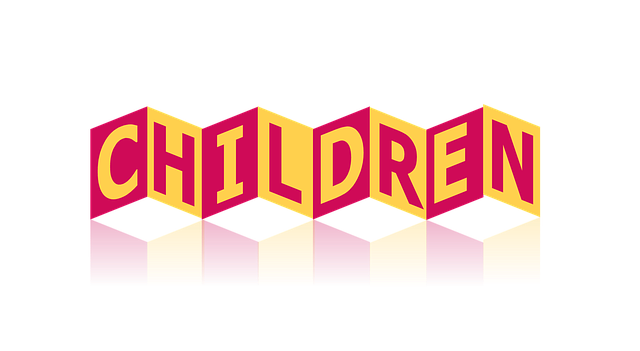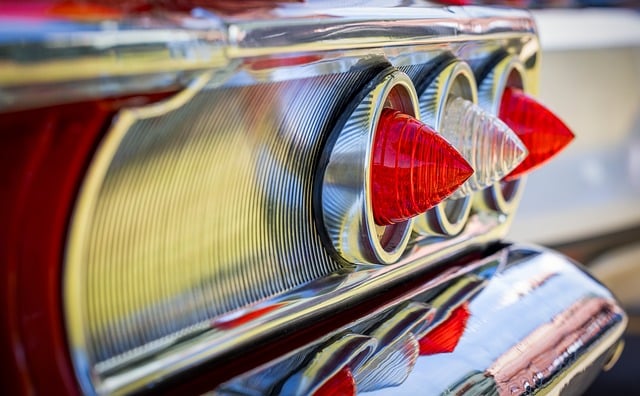When a vehicle is deemed a total loss, the journey to reclaim it from salvage status begins with a meticulous inspection. This critical step in the salvage title processing is designed to verify the condition and quality of repairs made, ensuring that the vehicle meets both safety standards and state regulations before it can be recertified with a rebuilt title. This article delves into the essential aspects of the inspection process, from understanding insurance salvage regulations and navigating the damaged car title transfer post-accident to the detailed steps for repair and inspection certification. It also provides comprehensive guidance on compliance with state salvage title laws and the importance of professional repairs in the rebranding of salvaged vehicles. Owners embarking on this process will find invaluable information on adhering to DMV requirements for a seamless vehicle ownership transfer, ensuring their rebuilt car is safe and legal for road use.
- Understanding the Role of Insurance Salvage Regulations in Vehicle Title Transfers
- Navigating the Damaged Car Title Transfer Process Post-Accident
- Essential Steps for Repair and Inspection Certification after a Total Loss Declaration
- Compliance with State Salvage Title Laws: What Owners Must Know
- Ensuring Vehicle Structural Integrity and Safety Feature Compliance in Rebuilt Cars
- Adhering to DMV Salvage Title Requirements for a Seamless Ownership Transfer
- The Importance of Professional Repairs for Successful Rebranding of Salvaged Vehicles
Understanding the Role of Insurance Salvage Regulations in Vehicle Title Transfers

When a vehicle is declared a total loss by an insurance company, it enters the realm of salvage title designation. Insurance salvage regulations play a critical role in the process of transferring damaged car titles. These regulations are designed to protect consumers and ensure that vehicles are returned to safe operating conditions before being reintroduced to the road. The regulations mandate a series of steps that must be taken, including a thorough inspection of the vehicle post-repair. This inspection is crucial for ascertaining whether the repairs have restored the vehicle’s structural integrity and safety features in compliance with state salvage title laws.
The repair and inspection certification is a formal document issued by a certified inspector or a state-authorized entity, verifying that the vehicle meets all necessary standards set forth in the state’s salvage title laws. This certification is indispensable for the vehicle ownership transfer to proceed, as it serves as proof that the vehicle has been adequately repaired and inspected. The process of obtaining this certification underscores the importance of adhering to insurance salvage regulations and DMV requirements. It ensures that each step of the damaged car title transfer is documented, from the initial salvage designation to the eventual issuance of a rebuilt title certification. Non-compliance with these regulations can lead to the vehicle remaining in a salvage status, restricting its use and resale potential. Therefore, anyone involved in the process of transferring a damaged car title must fully understand and follow the insurance salvage regulations to facilitate a successful and legal vehicle rebranding process.
Navigating the Damaged Car Title Transfer Process Post-Accident

When a vehicle is deemed a total loss by an insurance company after an accident, the damaged car title transfer process begins. This process involves transferring the title from the current owner to the insurance company, which then becomes the registered owner of the salvage vehicle. The insurance salvage regulations dictate that the vehicle cannot be operated on public roads until it has undergone a comprehensive inspection and met the repair and inspection certification requirements. Owners looking to reclaim their vehicles must navigate state salvage title laws, which vary by jurisdiction. These laws ensure that all repairs made to the vehicle are of the highest quality and restore the vehicle’s structural integrity and safety features to comply with roadworthiness standards. The repair and inspection certification is a critical step in the damaged car title transfer process, as it confirms that the vehicle has been thoroughly assessed and meets all necessary criteria. Once the vehicle passes this stringent evaluation, the owner can apply for a rebuilt title certification, effectively transferring the ownership back to them and allowing the vehicle to be legally driven on public roads again. It is imperative that all repair work is performed by qualified professionals who are familiar with the specific state regulations governing salvage titles, ensuring compliance and a smooth transition back into legal road use. Failure to adhere to these regulations can result in the vehicle remaining classified as a salvage vehicle, rendering it illegal for street use. Thus, understanding and following the repair and inspection certification process is crucial for successfully transferring a damaged car title post-accident.
Essential Steps for Repair and Inspection Certification after a Total Loss Declaration

When a vehicle is declared a total loss by an insurance company, the path to returning it to the roads involves adhering to strict salvage regulations and undergoing a comprehensive repair and inspection certification process. This process begins with the transfer of the damaged car title from ‘total loss’ to ‘salvage’ status as mandated by state salvage title laws. The vehicle owner must then initiate repairs, ensuring that all work is carried out by licensed professionals who comply with insurance salvage regulations. These repairs are not merely cosmetic; they must address the structural integrity of the vehicle and ensure that it meets safety standards set forth by the Department of Motor Vehicles (DMV).
The repair and inspection certification process is a critical step in the title transfer journey. It involves a detailed assessment by certified inspectors who examine the extent of damage, the quality of repairs made, and the vehicle’s overall compliance with state regulations. This thorough evaluation ensures that the vehicle is safe for road use and that its salvage title can be upgraded to a rebuilt title certification upon passing the inspection. The process culminates in the issuance of a new title reflecting the vehicle’s rebuilt status. It is imperative for vehicle owners to meticulously follow these regulations, as failing to meet the standards can result in the vehicle remaining classified as salvage and thus unfit for road use. Adherence to DMV salvage title requirements and insurance salvage regulations is not just a formality but an essential step in the successful rebranding of a previously totaled vehicle.
Compliance with State Salvage Title Laws: What Owners Must Know

When a vehicle is deemed a total loss by an insurance company and the title is branded as salvage, navigating the subsequent steps for transferring ownership and reinstating the car to the road can be complex. Owners must familiarize themselves with State Salvage Title Laws, which govern the process of transferring a damaged car title. These laws are designed to ensure that vehicles restored after significant damage meet stringent safety and quality standards. The process begins with comprehensive repairs, which must be carried out by certified professionals who comply with Insurance Salvage Regulations. It is imperative that all repair work adheres to these regulations, as they dictate the necessary standards for vehicle restoration.
Once the repairs are completed, the vehicle undergoes a rigorous Repair and Inspection Certification process. This evaluation assesses whether the car’s structural integrity has been restored, if safety features are up to par, and that all work complies with State Salvage Title Laws. The inspection is a critical step in the process as it ensures that the vehicle is safe for public roads. A passing grade in this inspection is mandatory for obtaining a rebuilt title certification, which effectively transfers the damaged car’s title from salvage to a standard title. Failure to pass this examination means the vehicle cannot be registered and remains off the road. Owners must diligently follow all state regulations and ensure their vehicles meet these standards to successfully complete the title transfer process and return their vehicle to legitimate use on public roadways.
Ensuring Vehicle Structural Integrity and Safety Feature Compliance in Rebuilt Cars

Navigating the process of transferring a damaged car title to a rebuilt title involves stringent adherence to insurance salvage regulations and state salvage title laws. A critical step in this process is the meticulous inspection of the vehicle post-repair. This inspection, mandated by authorities, ensures that the structural integrity of the vehicle has been fully restored. Inspectors scrutinize the frame and body to verify that repairs are not only skillfully executed but also meet or exceed the original manufacturer’s specifications. The safety features of the vehicle are equally important; they must be intact and functioning correctly after the restoration process. Compliance with these safety standards is non-negotiable, as it directly impacts the roadworthiness of the rebuilt car. The repair and inspection certification, which is awarded upon successful completion of this evaluation, serves as proof that the vehicle adheres to all the necessary regulations and is safe for the new owner. This certification is pivotal in the vehicle ownership transfer process, ensuring peace of mind for both the buyer and seller. It guarantees that the car has been thoroughly vetted and is compliant with the stringent requirements set forth by state salvage title laws, thereby facilitating a smooth transition to rebuilt title status. Ensuring that all repairs are conducted by qualified professionals who adhere strictly to these regulations is paramount for a successful rebranding of the vehicle’s title. Failure to comply can result in the car remaining classified as a salvage vehicle, ineligible for regular insurance coverage and road use.
Adhering to DMV Salvage Title Requirements for a Seamless Ownership Transfer

When transitioning a damaged car from a salvage title to a rebuilt title, adherence to DMV salvage title requirements is paramount for a seamless ownership transfer. The process begins with strict insurance salvage regulations that dictate the terms under which an insurer may declare a vehicle a total loss. These regulations ensure that all interested parties are protected and that the vehicle’s history is accurately reported. As part of these regulations, extensive repairs must be documented and approved through a rigorous repair and inspection certification process. This certification verifies that the vehicle has been restored to a condition that meets state salvage title laws, which often include specific safety and structural standards. The repair work must be carried out by qualified professionals who understand the intricacies of these laws and the importance of compliance. Upon successful completion of the repair and inspection certification, the vehicle can then proceed to the ownership transfer phase. Here, the state’s salvage title laws are again at the forefront, mandating that the vehicle’s history be disclosed to any prospective buyer or owner. This transparency is crucial for maintaining the integrity of the vehicle market and ensuring consumer protection. The final step in the process is the issuance of a rebuilt title certification by the DMV, which signifies that the vehicle has passed all necessary inspections and is fit for safe road use. Throughout this entire process, it is essential to work closely with the DMV and ensure that all paperwork, repairs, and inspections are in order to avoid delays or complications in the transfer of vehicle ownership.
The Importance of Professional Repairs for Successful Rebranding of Salvaged Vehicles

When a vehicle is declared a total loss by insurance companies, it enters the salvage market where it can be acquired by new owners. For such vehicles to return to road legality, a meticulous repair and inspection certification process is indispensable. This process, governed by state salvage title laws, ensures that every damaged car title transfer is accompanied by repairs that not only restore the vehicle’s functionality but also meet the rigorous standards set forth by these regulations. Professional repairs are crucial in this context; they guarantee that the vehicle’s structural integrity and safety features align with the mandates of the DMV, thereby facilitating a smooth vehicle ownership transfer. Technicians who specialize in salvage vehicle repair must adhere to specific guidelines to ensure that every component that was damaged or compromised during the initial incident is restored to its optimal condition. The repairs must be thorough and up to code; otherwise, the vehicle may fail the subsequent inspection, leaving it stranded and ineligible for a rebuilt title certification. This critical step in the process underlines the importance of engaging licensed professionals who are well-versed in insurance salvage regulations and state salvage title laws to oversee the repair and ensure that all necessary documentation is completed accurately. Only with their expertise can vehicle owners navigate the complexities of transferring a damaged car title and move forward with obtaining the proper certification for road use.
In conclusion, navigating the salvage title process is a multifaceted endeavor that hinges on stringent insurance salvage regulations and adherence to state laws. The critical step of a comprehensive vehicle inspection post-total loss ensures that every rebuilt car meets the high standards necessary for road safety and legal compliance. Owners must engage in meticulous repairs, ideally conducted by skilled professionals, to secure a rebranding of their vehicle title. By understanding the essential steps for repair and inspection certification, adhering to state salvage title laws, and ensuring compliance with DMV requirements, individuals can successfully transfer ownership of their salvaged vehicles. This process not only restores a car to a safe and legal condition but also reinstates its status as a reliable asset on public roadways.



